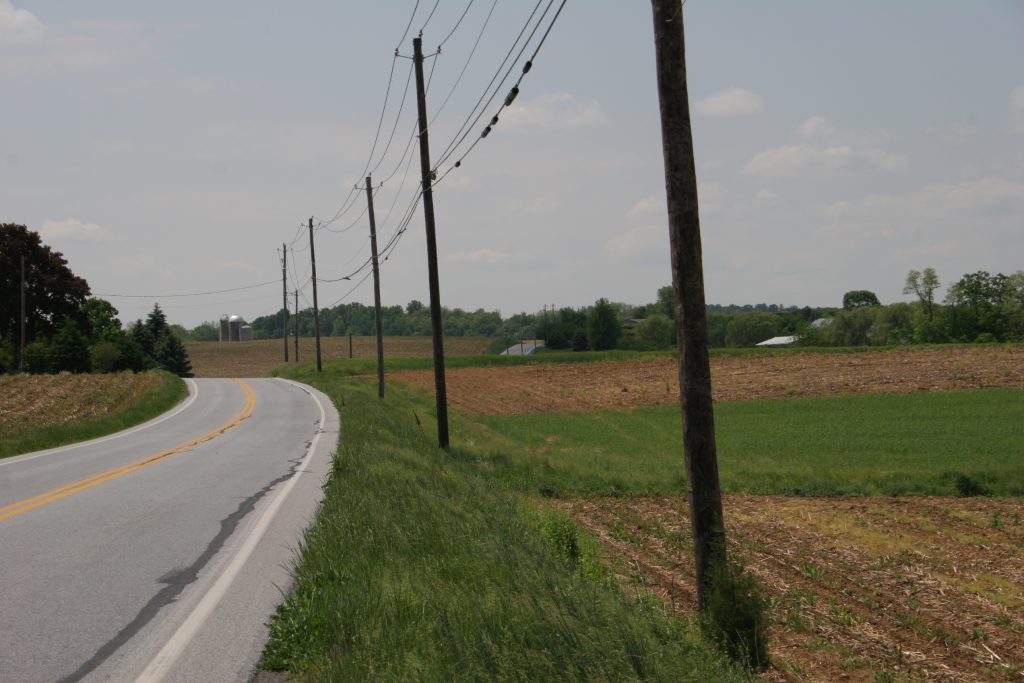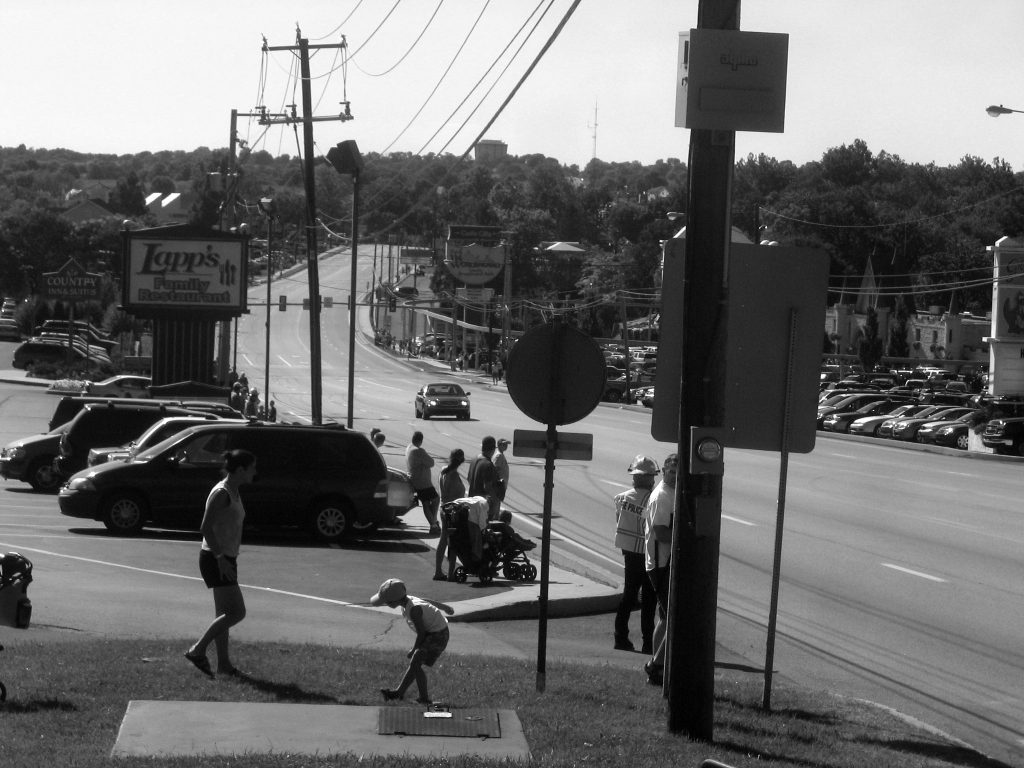Lancaster, PA: As A Small City Thrives, Its Suburbs Founder
On a recent trip back to my hometown, I poked around the eastern suburbs, visiting a friend who had just started a job managing the new café-bar at the Cartoon Network Hotel. The well-reviewed hotel (but not on Yelp, apparently) sits in a strip mall, sandwiched between the Golden Corral buffet and its operator, Dutch Wonderland, an ostensibly Pennsylvania Dutch-themed amusement park that figured prominently in my youth.
The strip has changed quite a bit since I attended the JP McCaskey High School senior prom (five years in a row, no less– long story) many years ago across the street at the Lancaster Host hotel, a boxy, 1966 concrete monstrosity (formerly the Lancaster Host Farm Hotel) that was demolished and replaced after the convenient excuse of a catastrophic water main break in 2016. It is now a Wyndham.

Once upon a time, this was the eastern hinterland of my hometown. The strip malls extended east from across the Conestoga Creek. In contrast, the southern and southwestern hinterlands of town were largely rural in the rolling hills of the piedmont toward the Susquehanna River. An “urbanized” corridor connects Lancaster to northern, northeastern, and eastern suburbs. In the east, visitors from Jersey buy Amish quilts. Tourists take pictures of signs in cities like Blue Ball, Intercourse, and Paradise. Harrison Ford punches a tourist. And, of course, shoppers frequent the outlet malls!
Or, at least, they used to.
THE DEATH AND LIFE OF GREAT AMERICAN SHOPPING MALLS
On a Friday evening, I stopped in at the New Balance “outlet” store, ever on the hunt for colorful versions of the classic, USA-made 990 series sneaker, whose strong heel support I’ve favored since a teenage tendency to overpronation. But no sneakers were to be found, save the $129.95 full-priced versions. No discounts, no factory seconds, no sales, just the $129.95. Out of curiosity, I poked around online and found two new pairs on Amazon for $46.95 and $56 including shipping.
Well, shit. Is this why retail is dying?
More specifically, is brick-and-mortar retail dying because Amazon has figured out some actuarial sorcery that allows it to sell products at a loss while still growing and hoarding capital? (More on this one later). Or does it have more to do with the soul-sucking experience of walking across the endless sea of blacktop, shopping in taxpayer-subsidized strip malls, far from any concept of “place”?
Some of my questions were addressed in an article the next day in the local newspaper. Rockvale Square Outlets— which my erstwhile German exchange students hypercorrected to Rockwale, much to our amusement- once had 120 stores. It now has 45. While online retail is a convenient scapegoat, the plodding attempts to remake America’s shopping malls suggest that maybe the mall retail experience is also to blame, in no small part. You drive out to some stinking hot parking lot on a summer’s day. You cross a landscape of sweaty hot asphalt– rocks crushed up and mixed with oil. The air stinks of diesel exhaust. Heat ripples off the hoods of giant SUV’s that narrowly avoid mowing you down as you walk through the parking lots nonexistent pedways. Sounds, uh, unpleasant! But those deals!

Personally, I enjoy the brick-and-mortar retail experience. I like the experience of walking to our local Mexican grocery store in Southwest Detroit. I enjoy the idea– radical, in Detroit- that I can walk into a storefront space and buy things like, uh, clothing. But one thing I really don’t like is having to drive to the suburbs to buy things. In this case, I’d rather buy something from Amazon for a far lower price and have it shipped to my door.
Yes, I know that’s awful. Yes, I know Amazon is an awful company– either from a retail standpoint or from a corporate culture standpoint. Yes, I know Jeff Bezos is the worst. But the tradeoff of driving a fossil fuel-burning car a half hour there and a half hour back to buy something for $130 versus getting it shipped to my door for $56, in both case supporting a Big Business, is pretty stark. Hey– I’d gladly pay $130 from a locally owned store. Especially for a US-made product. Research seems to suggest that I’m not alone ins this regard. (I recall Tressie McMillan Cottom’s excellent book Thicc, where she acknowledges the contradictions of being a black academic railing against the neoliberal corporate white colonial agenda while she maintains a Prime subscription).
When I’m thinking about my hometown, though, I’m somehow more attracted to the balance between urban and rural than I am to the mental gymnastics required to argue that suburban sprawl is in some way necessary. The market is proving that it is a money-losing proposition.
Of course, the polar opposite of “awful shopping malls” is “awful Amazon,” and that is not sustainable, either. I don’t mean just from an environmental standpoint. I mean that it is quite literally not financially sustainable to send a pair of pants from China to someone’s door overnight for $10. This sort of sorcery clearly can only be done solely to maintain high sales numbers. But this won’t last forever, obviously. The impending collapse of the financial bubble will, inevitably, substantially retool whatever mess of a business model Amazon is dealing with.
The other fortunate takeaway is that the city of Lancaster itself has rebounded from decades of sluggish, near-decline. Lancaster lost some major industrial employers in my youth as part of what I might call First Wave manufacturing decline (1990s-2000s). Armstrong World Industries still maintains a suburban office base, and some manufacturing, though its impressive urban industrial complex has since mostly been demolished in favor of a suburban hellscape on the north end of the city.
GROWTH POTENTIAL
The city of 60,000 (with an urbanized population of about 80,000) has enjoyed a lot of spillover from the overpriced urban cores of cities like Washington, Philly, and New York in recent years. This is a con as it drives up prices for already-squeezed renters. But it’s a pro in that it has helped advance a lot of higher-density development. A bizarre, 1962 urban renewal project in the downtown, which once hosted a kind of cool movie theater, was entirely vacant by the time of my teenage years. It has finally been redeveloped after decades of hemming and hawing by policymakers and business stakeholders alike. (This calls to mind the gradually decreasing lifespans of giant stadium projects, which I wrote about last week). And the city has made national headlines for a lot of peace-and-justice initiatives emphasizing the need to welcome refugees.
As the city fills up, it’s necessary to think beyond unrepentantly inflexible YIMBYism and think in terms of how to cost-effectively densify where we can, while maintaining a pragmatic policy that discourages sprawling growth outside the city. Farmland preservation is largely a private endeavor.
But the trendy YIMBYism of jam-packed coastal cities hasn’t yet filtered into the discourse of small Lancaster County towns– like Lititz, Ephrata, or Columbia, which have their own historic downtowns, but are, by and large, choked by sprawl-generated congestion. We need to include them in conversations about what progress looks like, and that has to involve a return to the idea that all cities can grow from the inside out, rather than from the outside in.
The costs of sprawl remain largely externalized. As long as regionalism is limited, sprawl can continue unchecked. But the slow demise of Rockwale [sic] contrasted with the urban growth of the city of Lancaster illustrate some opportunities for considering what responsible, forward-looking management looks like on a generational timeline inclusive of small towns and larger cities alike.




